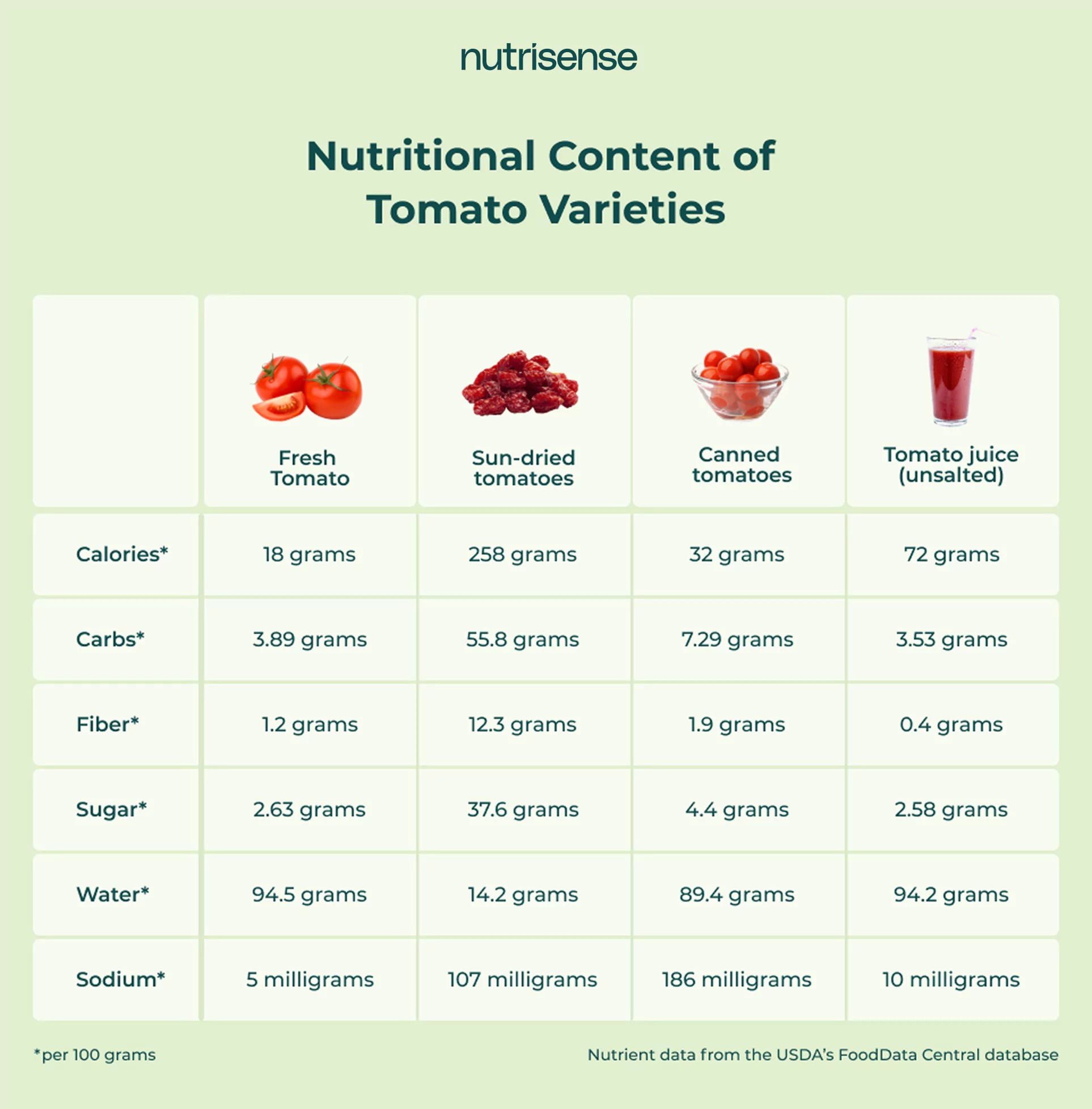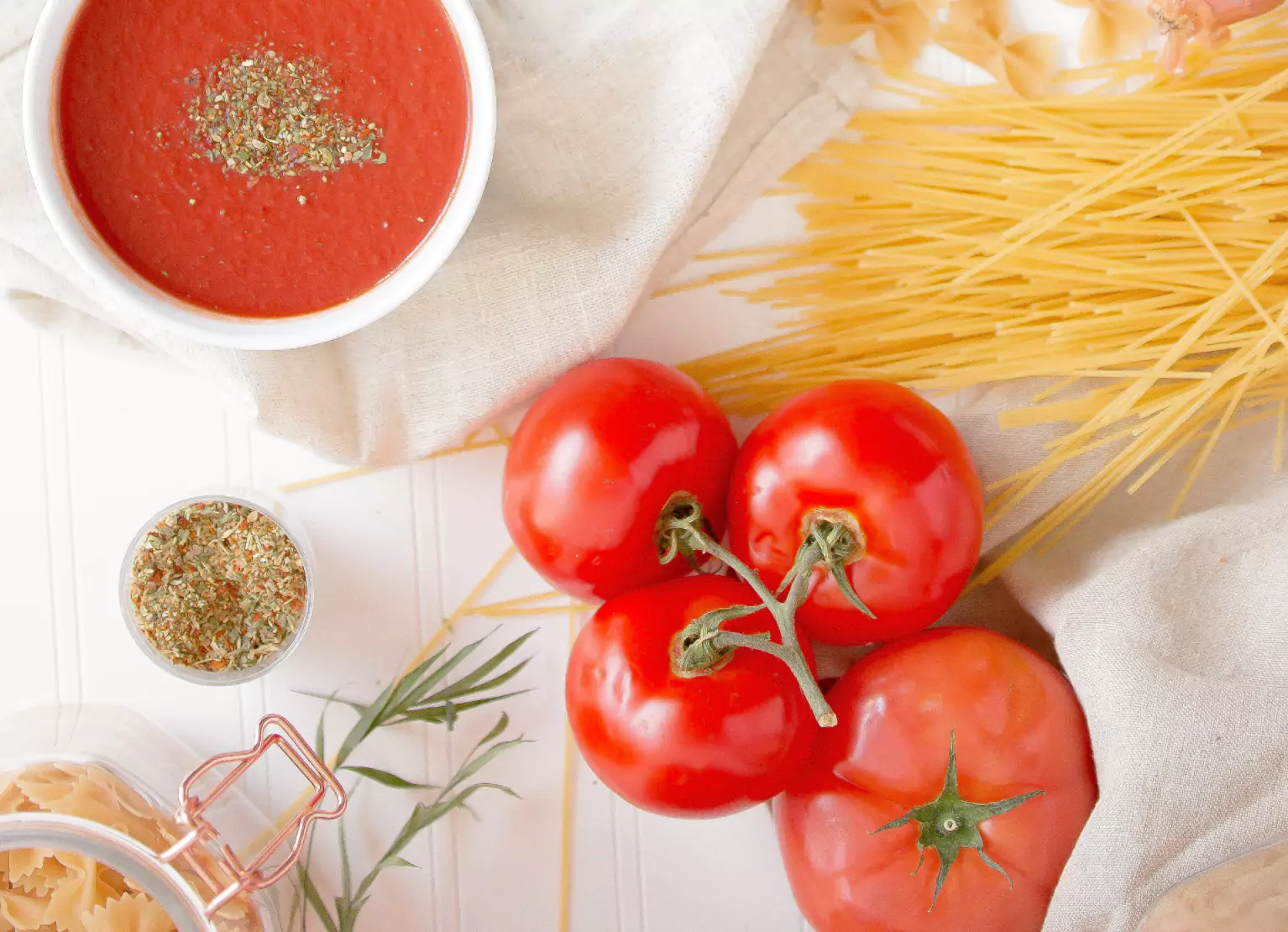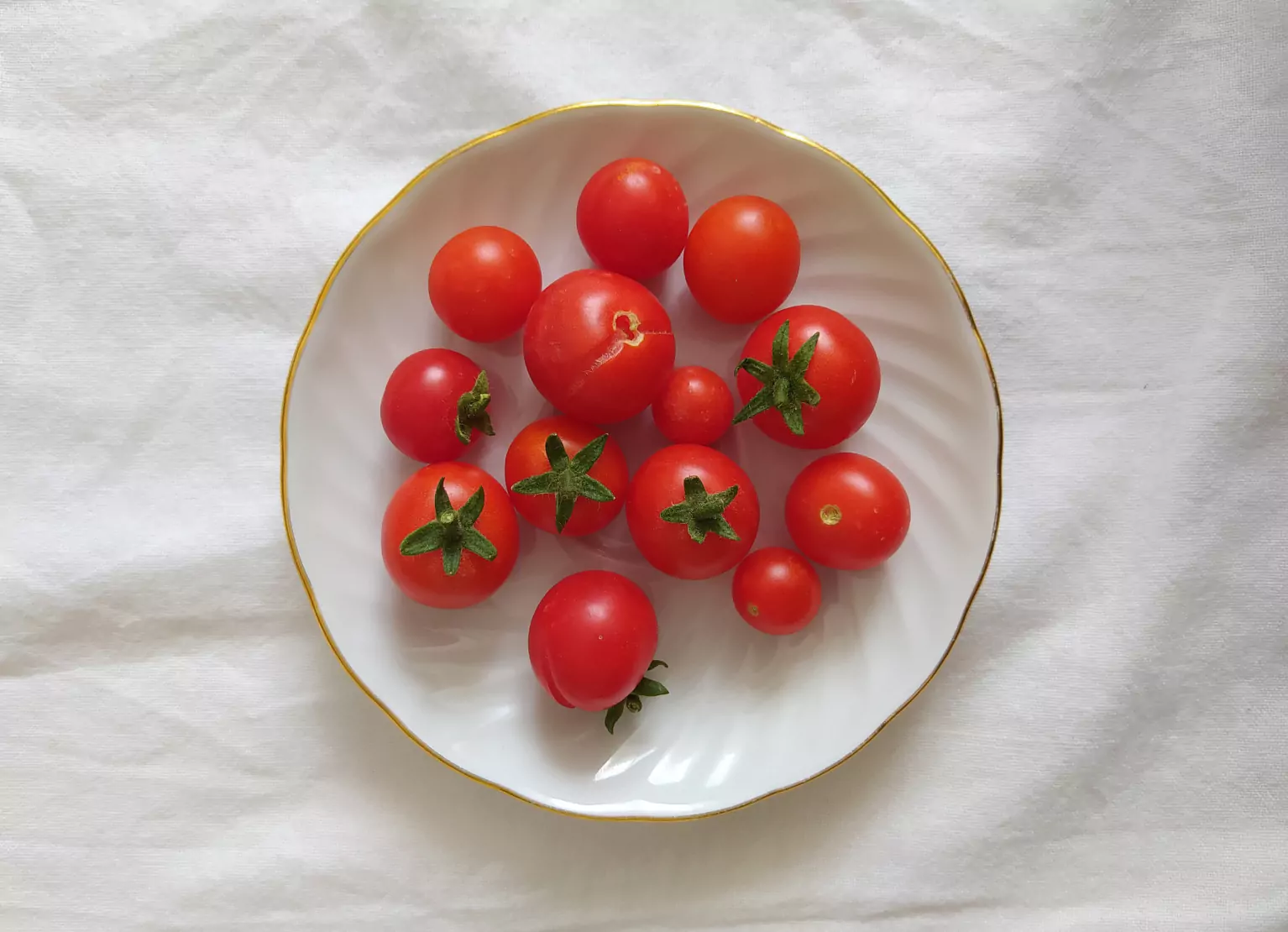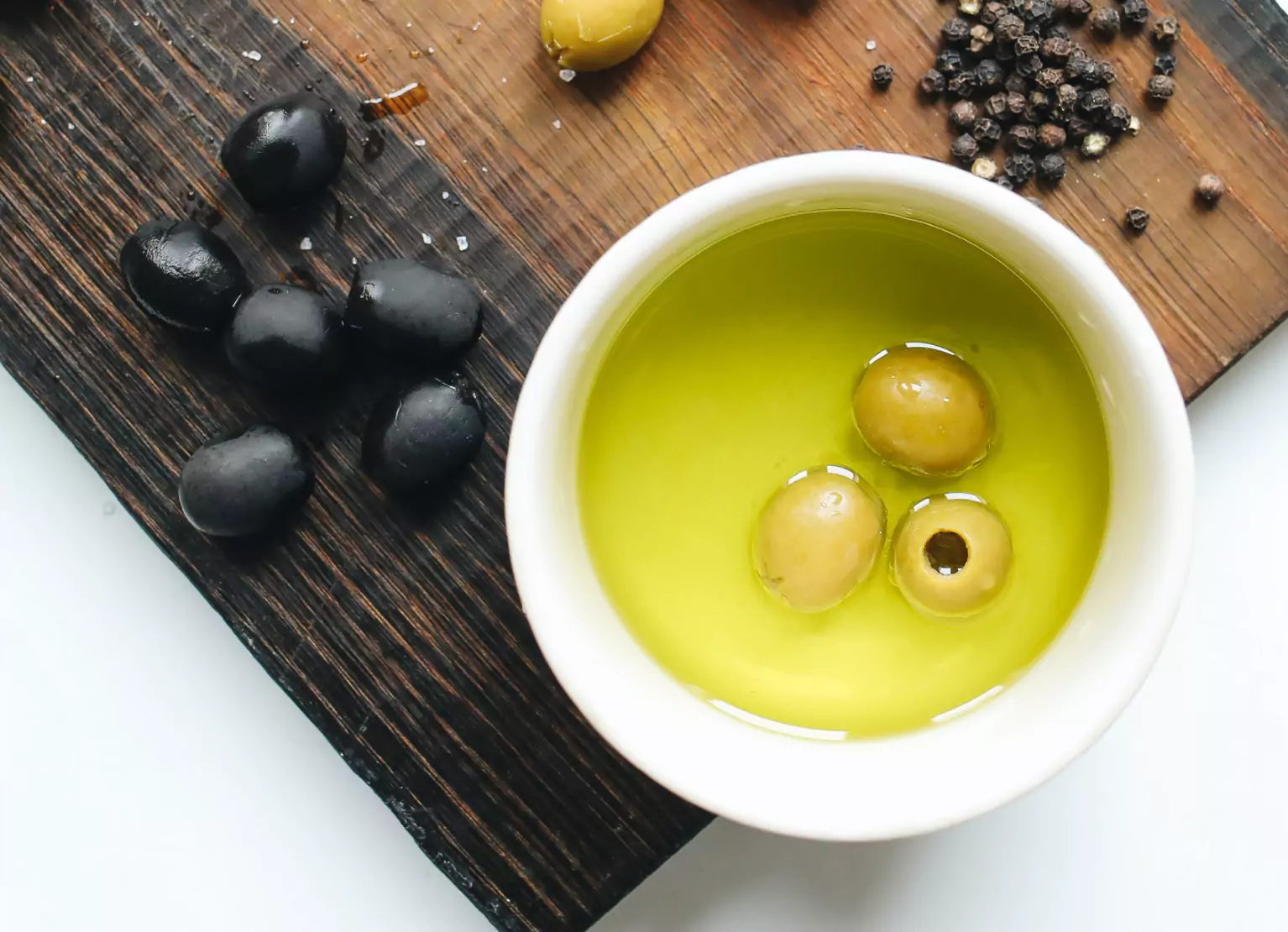Tomatoes and Blood Sugar: Navigating the Glycemic Index

Key Takeways
Tomatoes are an extremely versatile fruit that can add a fresh, tangy zest to any dish or meal. These plump, sweet, and juicy fruits are often enjoyed in everything from salads to soup, salsa, pasta sauce, and curries.
They’re also great sources of vitamin A, vitamin C, and vitamin K, contain many other healthy vitamins and minerals (like potassium and folate), and have a high water content, meaning they’re great for hydration. But is this sweet and tangy fruit safe for individuals watching their blood sugar levels to eat regularly in a balanced diet? What about its effects on a diabetes diet?
In this article, we’ll explore the connection between tomatoes and blood glucose levels, insulin responses, and other overall health effects that tomatoes may have.
Tomatoes and Blood Sugar: What the Science Says

Raw tomatoes are composed almost entirely of water and are low in carbohydrates. According to nutritional data from the USDA, only about three percent of a tomato is carbohydrate content, and that number includes the natural sugars found in tomatoes.
As a result, adding a tomato to your salads or omelets, for example, shouldn't lead to an unhealthy increase in blood sugar levels. You may want to be more careful with dishes like tomato sauces, which tend to have added sugars. It’s best to work with a registered dietitian (especially one who is also a glucose expert!) to figure out its effects on your unique body.
A recent meta-analysis of research on tomatoes found no significant effect of tomato consumption on fasting blood glucose levels. But what about the phytochemicals and other nutrient contents in tomatoes? Can these lead to a decrease in blood glucose?
Unfortunately, not much research has been done on this subject. However, a small randomized control trial involving healthy women pointed to lower stable blood sugar levels in people who consumed 200 grams of tomato juice or tomato 30 minutes before eating a small serving of carbohydrates.
It's challenging to draw significant conclusions from this study due to its small study population (25 women). So, although it may suggest that the tomato can have anti-hyperglycemic effects, more wide-reaching research is likely still needed to confirm its findings.
Do Different Tomato Varieties Have Different Effects?

While it's true that different types of tomatoes have distinct nutrient compositions, most types of fresh, raw tomatoes will have similar nutritional value. Fresh tomatoes are considered low GI foods with a score of 30. They also have a lower calorie content and may help with weight loss efforts for some when included in a diverse, healthy diet.
Here’s another example: according to the USDA, grape tomatoes have slightly more carbohydrate content than Roma tomatoes per 100-gram serving: 5.51 grams to 3.84 grams.
Sun-dried tomatoes, however, have much less water content and consequently much higher proportions of calories, carbohydrates, and other nutrients. In general, dried fruits may impact your glucose levels and overall health more than whole, raw fruits, so portion size is important to consider when adding sun-dried tomatoes to your plate.
Fresh vs. Canned Tomatoes
When we compare fresh tomatoes and canned tomatoes, much of the nutritional content appears to be the same. The key difference lies in the sodium content, which is added during the canning process.
So, if you prefer using canned tomatoes over the ripe fruit in your salsa and other tomato dishes, look for options that don't have salt added during processing. Scroll down to see an overview of the nutritional differences between fresh and canned tomatoes.
What About Tomato Juice?
Similarly to fresh tomatoes, tomato juice has very little carbohydrate content. However, fruit juices will almost always impact your glucose levels more significantly than whole fruits, so it's best to choose whole fruit whenever possible.
You'll also want to check the nutritional label to ensure that your serving of tomato juice is sparse in carbs and doesn't contain added salt. As healthier food choices, opt for low-sodium options. You can also reduce the risk of too many or too high of a blood sugar spike by using plain tomatoes to create homemade tomato sauce and tomato soups.
The table below shows how different methods of consuming tomatoes can affect their nutrient composition.

Tomatoes and Type 2 Diabetes

So, what does this all mean for individuals with type 2 diabetes? The low carbohydrate content in fresh tomatoes suggests that these fruits shouldn't cause too drastic of an increase in blood sugar, even if you have diabetes, prediabetes, or are at a higher risk of these conditions. Of course, remember, like most other foods, your response will be very individualized based on various other factors.
Some studies suggest that an antioxidant property called lycopene (found in tomatoes) can positively affect blood glucose levels in individuals with diabetes. However, more research is still needed to determine how strong the impact is.
However, another study published in the International Journal of Food Sciences and Nutrition found that there were no significant differences in blood glucose levels among diabetic participants who consumed 200 grams of raw tomato in their daily diet for eight weeks during the study period.
Due to these conflicting results across various studies, it's hard to determine how much, if any, side effects tomatoes can have on blood sugar levels. More research is still needed to determine how tomatoes may benefit individuals with diabetes.
{{rich-text-cta-cgm1="/style-guide"}}
Lycopene and Diabetes
Tomatoes have several important nutrients, one of which is called lycopene, and has been linked to preventing chronic diseases such as cancer and cardiovascular disease.
Despite these findings, one ten-year study involving 35,783 women found little evidence for an association between tomato-based food products and the risk of type 2 diabetes.
While lycopene can benefit individuals with diabetes, more studies are needed to confirm whether lycopene can lower your risk of developing this condition.
Antioxidant Effects of Lycopene

While there isn't much evidence for positive glycemic effects of tomatoes, it seems they may still have some benefits for individuals with diabetes.
Some studies suggest that lycopene may reduce oxidative stress and help heart health in healthy individuals and those with diabetes, indicating that this antioxidant may improve some adverse effects associated with type 2 diabetes.
Other research suggests that fermented tomatoes play a role in lipid metabolism and help lower hepatic lipid storage in the body. Also interesting to note, is that cooked tomatoes increases lycopene bioavailability in the body and have improved absorption with the addition of a fat such as olive oil!
Possible Link With Insulin Resistance
Tomatoes may also have an anti-hyperglycemic effect as the 13-oxo-OTA compound (found in tomatoes, Mandarin oranges, and bitter gourd) is essential in managing metabolic syndromes via insulin resistance pathways.
Research also suggests that the dried peels of fruits and vegetables (including tomatoes) may also have a beneficial impact on blood sugar. A study conducted on mice has shown that dried tomato peel may have a positive effect on glucose tolerance as well as on insulin resistance.
However, as these results have still not been observed in humans, more research is still needed to confirm this link. Remember that portion sizes are important when consuming dried fruits, as they generally tend to be higher in sugar and can lead to glucose spikes in some cases.
Other Potential Positive Effects

Apart from its effects on blood sugar, tomatoes may be beneficial for reducing cardiovascular risk associated with type 2 diabetes. Tomatoes have also been shown to have anti-cancer properties and may help support skin health and immune response.
While there may not be much direct evidence that eating tomatoes can lead to better blood sugar control, this fruit remains a tasty, nutritious option to add to your meals due to its low carbohydrate content and versatile flavor.
Don’t Like Tomatoes? Try These Alternatives

We love tomatoes, but if you don’t, there are some tasty alternatives you can swap out for a similar flavor and somewhat comparable health benefits! Here’s what the glucose experts at Nutrisense recommend if you’re looking to switch things up a bit:
Tamarind paste
Tamarind paste is both sweet and sour, making it an excellent option for cooking. This paste can sometimes serve as a close substitute for tomatoes in some recipes, too, especially if you want to add a tangy profile to a curry, soup, or sauce. It's also full of antioxidants and has been found to have a positive effect on blood sugar levels for some people.
Olives
This isn’t a one-to-one substitution, but you can try adding different varieties of olives to your cooking as a substitute for tomatoes since they have a similar umami flavor profile.
Olives are high in fiber and vitamin E and have anti-inflammatory properties, making them a great option to add to your dish even if you like tomatoes!
Beetroot
Cooking beetroot until soft, and then peeling and pureeing them is a great way to get a similar consistency and color to tomatoes in your recipe.
Beetroots are veggies that are full of antioxidants, may help regulate glucose levels, and can also help lower blood pressure.
Carrots and Vinegar
For some added zest, you can cook carrots until they soften and add a little vinegar for the consistency and tartness of tomatoes. Carrots are high in antioxidants, contain many vitamins, and can support healthy glucose and cholesterol levels.
Are There Possible Downsides of Eating Tomatoes?

While there are many health benefits of tomatoes, you should consider some things when consuming this fruit.
Pesticides
Pesticides are often used to cultivate tomatoes and many other fruits and vegetables, which can remain on their skin after harvest. Since tomato skins are consumed along with the flesh, there's a minor risk of pesticide ingestion.
Choose organically grown tomatoes and wash them well before eating to avoid this or minimize its occurrence.
Unripe tomatoes
Unripe green tomatoes contain a chemical called tomatine, an alkaloid mildly toxic to humans. Some researchers recommend limiting green tomato intake when possible due to some potential adverse effects.
The tomatine content in tomatoes lessens as the tomatoes mature, making red tomatoes safe to eat. Cooking tomatoes can also break down the toxin, making them safe to consume. Turning slightly unripe tomatoes into soups, sauces, and stews is a great way to enjoy them safely.
Find the right Nutrisense programto turn insight into progress.
Learn How Tomatoes Affect Your Health and Blood Glucose Levels with Nutrisense’s Glucose Experts
Everyone reacts differently to different foods. If you want to understand how your body responds to certain foods like tomatoes, consider working with an expert who can dig deeper into what your body’s data (like your blood glucose levels) means based on your unique needs.
A registered dietitian or nutritionist from Nutrisense can guide you through the process, offering insights on portion control, nutrient absorption, and the role of various fruits and vegetables in a healthy diet that works for you.
By tracking your meals and using tools like a continuous glucose monitor (CGM), you can also dig deeper into how tomatoes fit into a balanced eating plan. Ready to optimize your nutrition with personalized insights? Sign up for Nutrisense today and take the guesswork out of your health journey!
Go Beyond Glucose Data with Nutrisense
Your glucose can significantly impact how your body feels and functions. That’s why stable levels are an important factor in supporting overall wellbeing. But viewing glucose isn't enough. Nutrisense, you’ll be able to learn how to use your body's data to make informed lifestyle choices that support healthy living.
One-to-one coaching
Sign up to access insurance-covered video calls to work with a glucose expert: a personal registered dietitian or certified nutritionist who will help tailor your lifestyle and diet to your goals.
Monitor and measure what matters
With the Nutrisense CGM Program, you can monitor your glucose with health tech like glucose biosensors and continuous glucose monitor (CGM)s, and analyze the trends over time with the Nutrisense App. This will help you make the most informed choices about the foods you consume and their impact on your health.
Find your best fit
Ready to take the first step? Start with our quiz to find the right Nutrisense program to help you take control.

Amanda is a Nutrition Manager and Registered Dietitian, with a Masters in Dietetics from Stephen F. Austin State University. Originally from south GA, she got her undergrad degree from Texas Tech University. She worked at a hospital in Fort Worth, TX, for 4 years as a dietitian, counseling those living with HIV.




